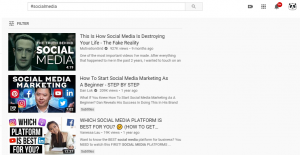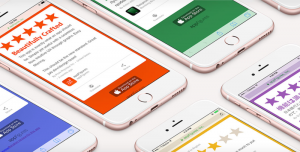by Loren McDonald, October 31, 2014
Google has done it again.
Inbox, the newest iteration of Gmail (still in invite-only stage at this writing), promises to revolutionize the inbox (again) and has email marketers worrying about how to respond (again).
And, here I am (again), asking email marketers not to get sidetracked by day-to-day distractions like Gmail Inbox, Priority Inbox, Unroll.me, symbols in subject lines and the best time or day to send email.
Yes, they might affect inbox or email activity at some point. It’s important to understand how the inbox has been evolving since email became a major conversion channel in the 1990s.
But, lavishing time on these issues du jour – the trees – keeps you from focusing on the forest, which is made up of questions such as “How can I make my email program more useful and valuable, both to my customers and to my company?”
Once you configure your email program to answer that question, you can start attending to details such as optimizing for Gmail Inbox. By then, we’ll know more about how it will affect marketing emails, and you won’t waste time on bad advice or pointless debates.
How to See the Forest As Well As the Trees
Start by asking yourself, “Am I using email to show why our products or services are different from/better than our competitors’, to solve my customers’ problems and to convey my company’s core values?”
Probably not, if you rely on a revolving lineup of discounts and promotions. Those messages don’t convey the company’s brand values, assets or brand differentiations (unless discounts is your core business). They don’t help customers solve problems or buy better.
Yes, email is a major conversion driver. Messages that say, “Buy this” play an important role in most marketing programs. However, the “buy this” focus can take you only so far. In the end, you spend more time on tricks and tactics to get customers to buy and less time creating value for everyone.
How to Convey Value and Promote Conversion
“White space” email. Suppose your company has a killer customer-service program. You could shoot a video spotlighting your CS employees on the job and add it to your regular email message or send it out in place of yet another discount.
Content like this fires all of the cylinders that drive your email engine:
- You show customers you care about their purchase satisfaction.
- You tell them something they might not know about your company, which can build identification and engagement.
- You differentiate yourself from companies that don’t offer similar care and attention.
- You humanize your messages by featuring a behind-the-scenes look at people who can affect or improve your customer’s purchase/post-purchase satisfaction.
This “white space” message offers a change of pace from the steady stream of broadcast promotions and discounts – and you can use the message elsewhere, too.
Add it to your onboarding program for new customers and subscribers or to an abandoned-cart reminder. Send as a post-purchase follow-up or wherever you need a reminder that help is a click or call away.
“Buy This” better. If you need to boost your “Buy This” focus, you can maintain a forest-based outlook by adding value.
One retailer drove significant revenue when it upgraded the reminder it sent to subscription-program participants that they were about to be charged for their recurring purchases.
The original email was a simple text-only message notifying customers about the upcoming credit-card charge. The new HTML email included recommended products based on past purchases and offered free shipping on additional items that brought the total above a certain threshold. The email, formerly viewed as a necessary evil, became the single highest revenue generating email the company sent.
You don’t have to create new content to drive differentiation and value. Scour your website and other information sources – white papers, customer-service manuals, product sheets, etc. – to find material you can revise and repurpose.
Get Off the Hamster Wheel
Seeing the bigger picture in your email program is hard to do when you’re trying to push out the next campaign. An out-of-office retreat can change your perspective and instill an appetite for change. But even a regular brunch-and-brainstorm session can propel you forward.
Fire up your calendar app, and schedule something today.
Until next time, take it up a notch!
(326)
Report Post





